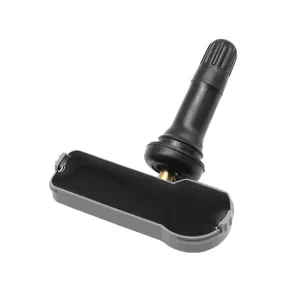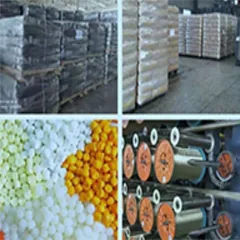Dispersant is a surfactant that has two opposite properties: lipophilic and hydrophilic in the molecule. It can uniformly disperse the solid particles of inorganic and organic pigments that are difficult to dissolve in liquids. It can also prevent the settling and agglomeration of solid particles and form the necessary chemicals for stable suspensions.

introduce #
Explanation in the reference book #
Agents that promote material particles to be evenly dispersed in the medium to form a stable suspension. Dispersants are generally divided into two categories: inorganic dispersants and organic dispersants. Commonly used inorganic dispersants include silicates (such as water glass) and alkali metal phosphates (such as sodium tripolyphosphate, sodium hexametaphosphate, sodium pyrophosphate, etc.). Organic dispersants include triethylhexyl phosphate, sodium lauryl sulfate, methylpentanol, cellulose derivatives, polyacrylamide, gur gum, fatty acid polyethylene glycol esters, etc.
Explanations in academic literature #
The definition of dispersant is a substance that can reduce the aggregation of solid or liquid particles in a dispersed system. Adding dispersants and suspending agents when preparing emulsifiable concentrates and wettable powders facilitates the formation of dispersions and suspensions, and maintains the relatively stable function of the dispersion system.
Explanation in chemical dictionary #
An additive that can enhance and improve the dispersion properties of solid or liquid materials. When grinding solid dyes, a dispersant is added to help crush the particles and prevent the agglomeration of the crushed particles to keep the dispersion stable. Oily liquids that are insoluble in water can be dispersed into very small droplets under high shear stirring. After stopping stirring, they will quickly stratify under the action of interfacial tension. After adding a dispersant and stirring, a stable droplet can be formed. emulsion. Its main function is to reduce the interfacial tension between liquid-liquid and solid-liquid. Dispersants are therefore also surfactants. Types include anionic, cationic, nonionic, amphoteric and polymeric. The anionic type is the most used.
type #
Fatty acids, fatty amides and esters #
The combined use of stearamide and higher alcohols can improve lubricity and thermal stability. The dosage (mass fraction, the same below) is 0.3%-0.8%. It can also be used as a slip agent for polyolefins; vinyl bisstearamide, also known as Ethylene bisstearamide (EBS) is a high melting point lubricant, the dosage is 0.5% to 2%; monoglyceryl stearate (GMS), glyceryl tristearate (HTG); oleic acid acyl Dosage 0.2% ~ 0.5%; hydrocarbon paraffin solid, melting point is 57 ~ 70 ℃, insoluble in water, soluble in organic solvents, dispersion, compatibility and thermal stability in the resin are poor, the dosage is generally below 0.5% .
Paraffin wax #
Although paraffin is an external lubricant, it is a non-polar linear hydrocarbon and cannot wet the metal surface, which means it cannot prevent polyvinyl chloride and other resins from adhering to the metal wall. It can only be used together with stearic acid, calcium stearate, etc. To achieve synergy.
Liquid paraffin: freezing point (-15℃) ~ (-35℃), poor compatibility with resin during extrusion and injection molding processing, the addition amount is generally 0.3%-0.5%, if too much, it will cause processing problems. Performance deteriorates.
Microcrystalline paraffin: Obtained from the petroleum refining process. It has a relatively large molecular weight and many isomers. The melting point is 65~90°C. It has good lubricity and thermal stability, but poor dispersion. The dosage is generally 0.1 %~0.2%, it is best to use it together with butyl stearate and higher fatty acids.
Metal soaps #
Metal salts of higher fatty acids are called metal soaps, such as barium stearate (BaSt), which is suitable for a variety of plastics, with a dosage of about 0.5%; zinc stearate (ZnSt), which is suitable for polyolefins, ABS, etc., with a dosage of 0 .3%; calcium stearate (CaSt) is suitable for general plastics and used for external lubrication, with a dosage of 0.2%~1.5%; other stearic acid soaps such as cadmium stearate (CdSt), magnesium stearate (MgSt), hard Copper fatty acid (CuSt).
Low molecular waxes #
Low molecular wax is a series of oligomers with different properties made from various polyethylene (homopolymer or copolymer), polypropylene, polystyrene or other modified polymers as raw materials, cracked and oxidized. . Its main products include: homopolymers, oxidized homopolymers, ethylene-acrylic acid copolymers, ethylene-vinyl acetate copolymers, and low molecular ionomers. Among them, polyethylene wax is the most common.
The average relative molecular weight of commonly used polyethylene wax is 1500~4000, and its softening point is 102°C; the average relative molecular weight of other specifications of polyethylene wax is 10000~20000, and its softening point is 106°C; the long chain of oxidized polyethylene wax There is a certain amount of ester group or soap group in the molecule, so the internal and external lubrication effect on PVC, PE, PP, ABS is relatively balanced, the effect is better, and its transparency is also good. Since there are many types of dispersants and practical application environments, it is important to choose the appropriate dispersant.
Polyethylene glycol 200 or 400 (molecular weight approximately 190-420) is a good dispersant/solubilizer/wetting agent/solvent for water-soluble dispersions. Polyethylene glycol 200 or 400 is lipophilic and can form a stable dispersion system well with dispersions with a low hydrophilic-lipophilic balance (HLB value).
effect #
1. Improve the gloss and increase the leveling effect. The gloss actually mainly depends on the scattering of light on the surface of the paint (that is, a certain flatness. Of course, a testing instrument is required to determine whether it is flat enough. Not only the number and shape of the native particles, but also their Combining method), when the particle size is less than 1/2 of the incident light (, in the same way, the covering power relies on scattering to provide the main covering power and will not increase (except for carbon black, which mainly relies on absorbing light, forget about organic pigments). Note: The Incident light refers to the range of visible light. It’s hard to say when it comes to leveling; but note that the reduction in the number of native particles reduces the structural viscosity, but the increase in specific surface will reduce the amount of free resin. It’s hard to say whether there is a balance point, but for general powders Paint leveling is not as fine as possible.
2. Prevent floating color and blooming.
3. Improve the tinting power. Note that the higher the tinting power, the better in the automatic color adjustment system.
4. Reduce viscosity and increase pigment loading.
5. It is like this to reduce flocculation, but the finer the particles, the higher the surface energy, and the higher the adsorption strength of the dispersant is required, but the dispersant with too high adsorption strength may cause disadvantages to the coating film performance.
6. The reason for increasing storage stability is actually similar to the above. Once the dispersant has insufficient stabilizing strength, the storage stability will become worse (of course, judging from your picture, there is no problem).
7. Increase color development, color saturation, transparency (organic pigments) or hiding power (inorganic pigments).
TEGO Dispers wetting and dispersing agents help moisturize and stabilize pigments, prevent color floating and pigment settling, maintain stable pigment hiding power and color intensity during storage, while ensuring maximum color yield and minimum grinding steps. Since these additives reduce the viscosity and increase the maximum pigment concentration when dispersed, the production of coatings and pigment concentrates is more cost-effective. TEGODispers 757 W is recommended for the production of water-based pigment concentrates. It is also the product of choice for corrosion-resistant water-based coatings. Like TEGODispers 750W and TEGODispers 755 W, they meet the highest optical and rheological performance requirements. For universal colorants suitable for both solvent-borne and water-based formulations, the TEGODispers 65x range is the current market standard product that does not contain ethoxyalkylphenols. TEGODispers 656, 670 and 685 are particularly suitable for modern solvent-based formulations. In the UV system, TEGODispers 685 is suitable for all pigments, and TEGODispers 688 is suitable for matting powders. All TEGODispers products do not contain ethoxyalkylphenols.
Fundamental #
Select dispersant #
As the name suggests, dispersant is to reasonably disperse various powders in solvents, and through certain charge repulsion principles or polymer steric hindrance effects, various solids can be stably suspended in solvents (or dispersions).
In the coating production process, pigment dispersion is a very important production link. It is directly related to the storage, construction, appearance and performance of the paint film, so the reasonable selection of dispersants is a very important production link. However, the quality of coating slurry dispersion is not only related to the dispersant, but also to the formulation of the coating formula and the selection of raw materials.
Principle of electric double layer #
The dispersants used in water-based coatings must be water-soluble, and they are selectively adsorbed to the interface between the powder and water. The most commonly used ones are anionic, which ionize in water to form anions, have certain surface activity, and are adsorbed on the surface of the powder. After the dispersant is adsorbed on the surface of the powdery particles, a double electric layer is formed. The anions are tightly adsorbed on the surface of the particles and are called surface ions. Oppositely charged ions in a medium are called counterions. They are electrostatically adsorbed by surface ions, and some of the counterions are more closely combined with particles and surface ions. They are called bound counterions. They become a moving whole in the medium, carrying a negative charge, and other counter ions are surrounded by them. They are called free counter ions and form a diffusion layer. This forms an electric double layer between surface ions and counterions.
Electrokinetic potential: The negative charge of the particles and the positive charge of the diffusion layer form a double electric layer, which is called electrokinetic potential. Thermodynamic potential: The electric double layer formed between all anions and cations, the corresponding potential.
It is the electrokinetic potential rather than the thermodynamic potential that plays the role of dispersion. The charges in the electrokinetic potential are unbalanced and there is charge repulsion, while the thermodynamic potential is a charge balance phenomenon. If the concentration of counter ions in the medium increases, the free counter ions in the diffusion layer will be forced into the bound counter ion layer due to electrostatic repulsion. In this way, the electric double layer will be compressed and the electrokinetic potential will decrease. When all the free counter ions become bound, After the counter ions, the electrokinetic potential is zero, which is called the isoelectric point. Without charge repulsion, the system has no stability and flocculation occurs.
Steric hindrance effect #
To form a stable dispersion system, in addition to utilizing electrostatic repulsion, that is, the negative charges adsorbed on the surface of particles repel each other to prevent adsorption/aggregation between particles and eventually the formation of large particles that stratify/settle. The theory of steric hindrance effect, that is, when particles with adsorbed negative charges approach each other, they slide and stagger each other. This type of surfactant that plays a steric hindrance effect is generally a non-ionic surfactant. Flexible use of the theory of electrostatic repulsion and steric hindrance can form a highly stable dispersion system.
The polymer adsorption layer has a certain thickness, which can effectively block the mutual adsorption of particles, mainly relying on the solvation layer of the polymer. When the adsorption layer on the surface of the powder reaches 8~9nm, the repulsive force between them can protect the particles from flocculation. Therefore, polymer dispersants are better than ordinary surfactants.

 April 1, 2024
April 1, 2024 










